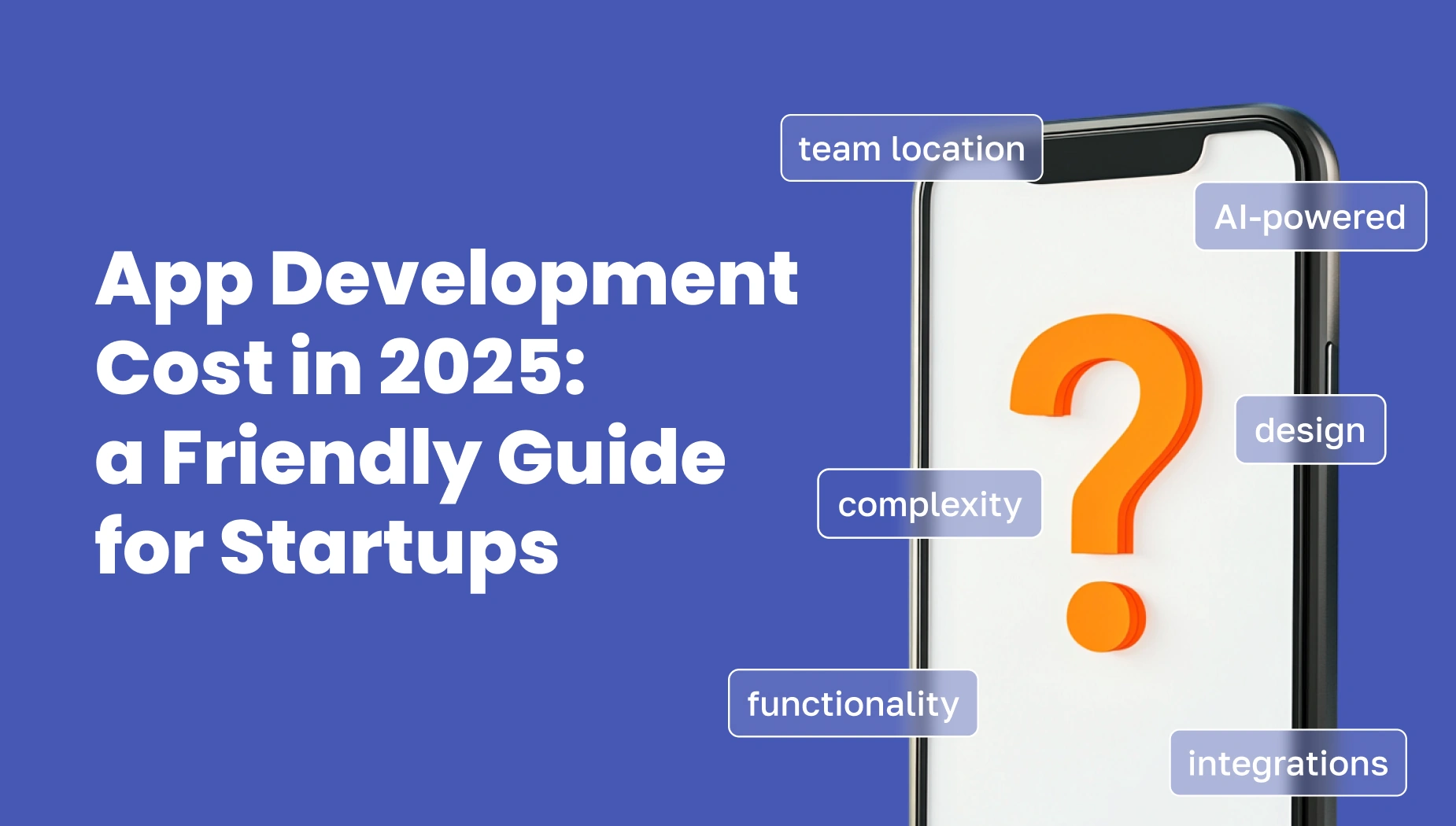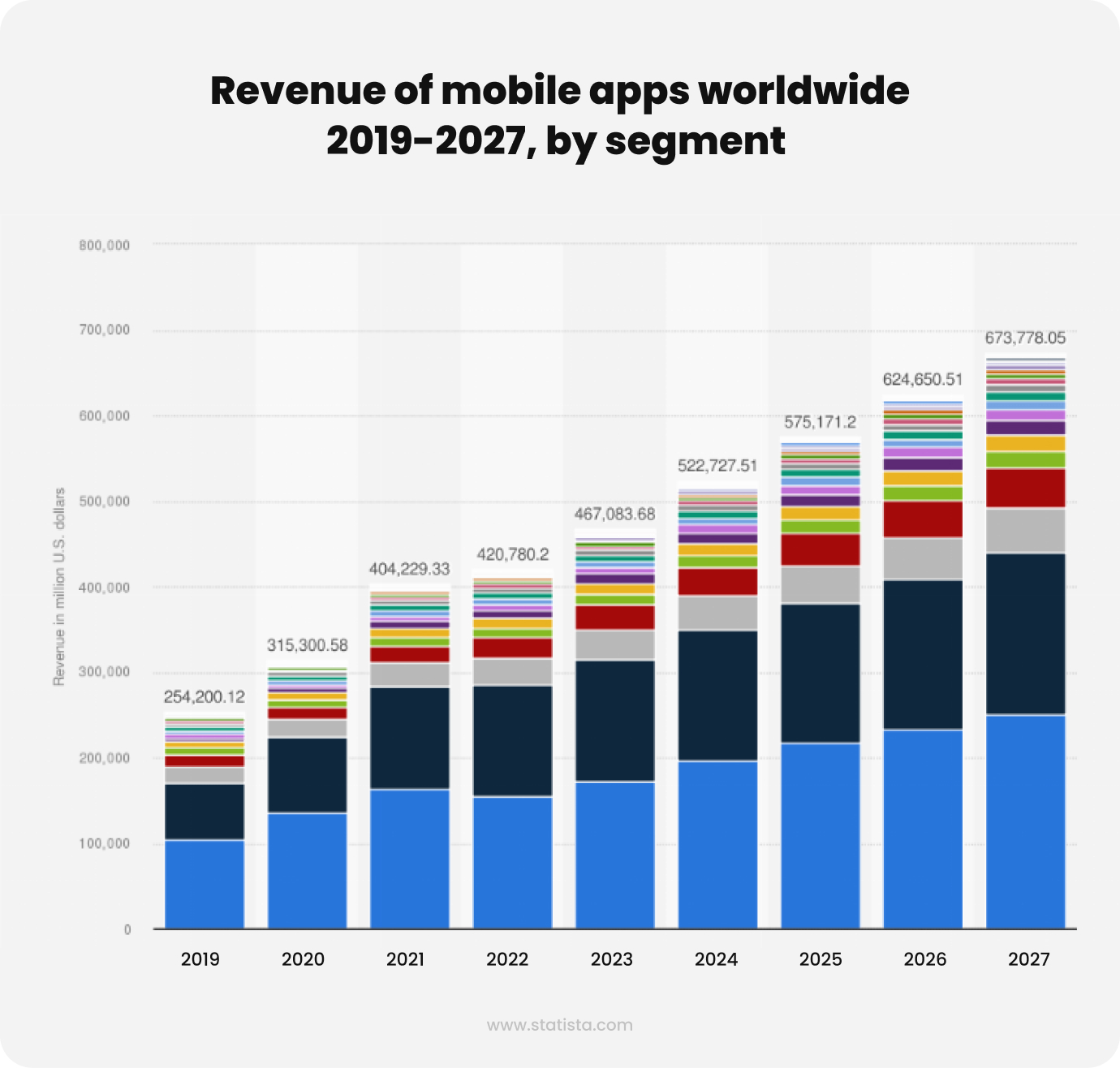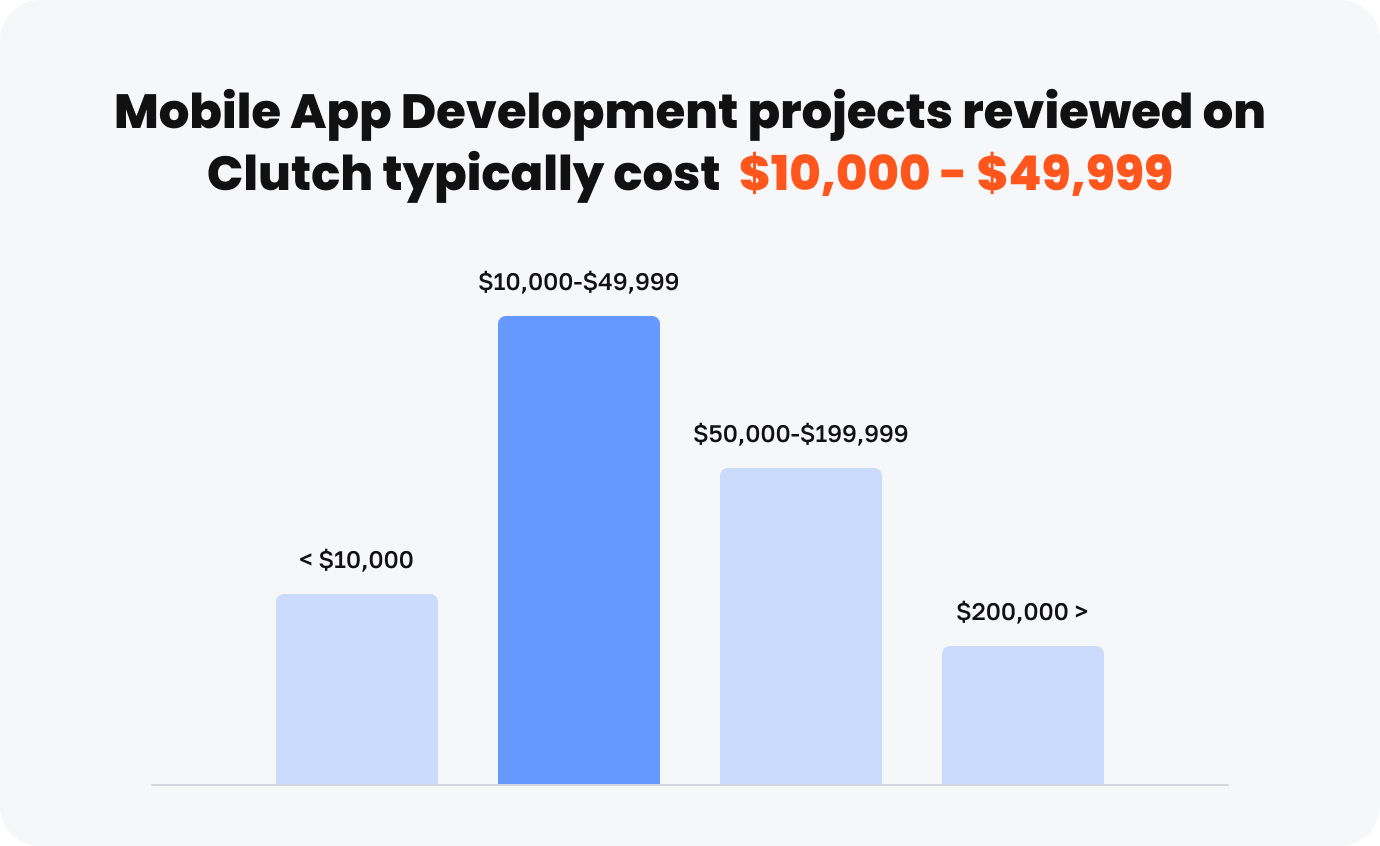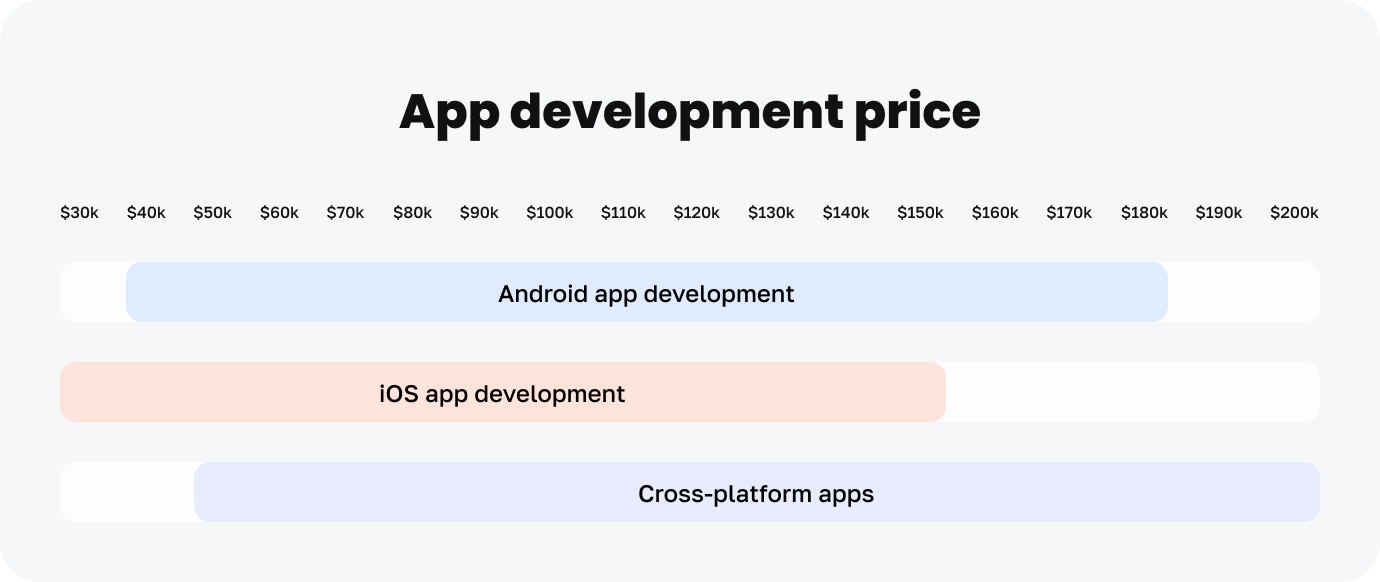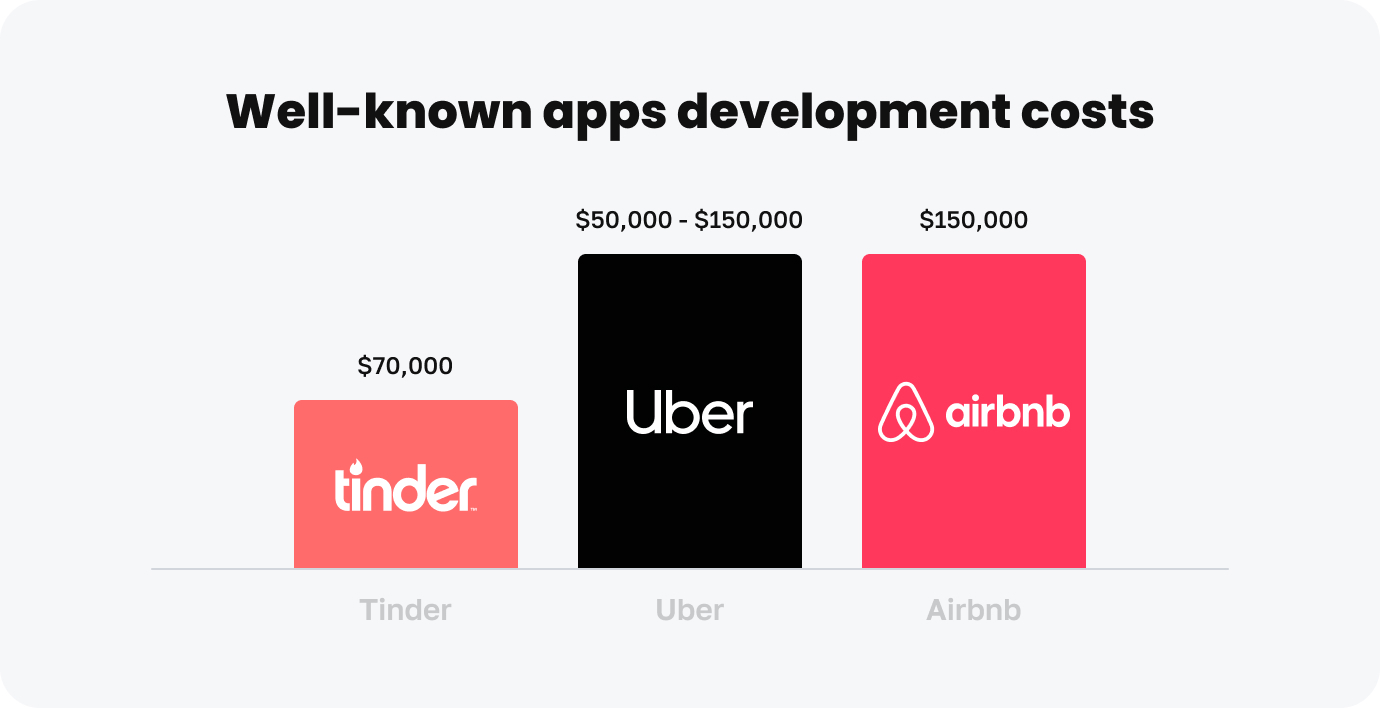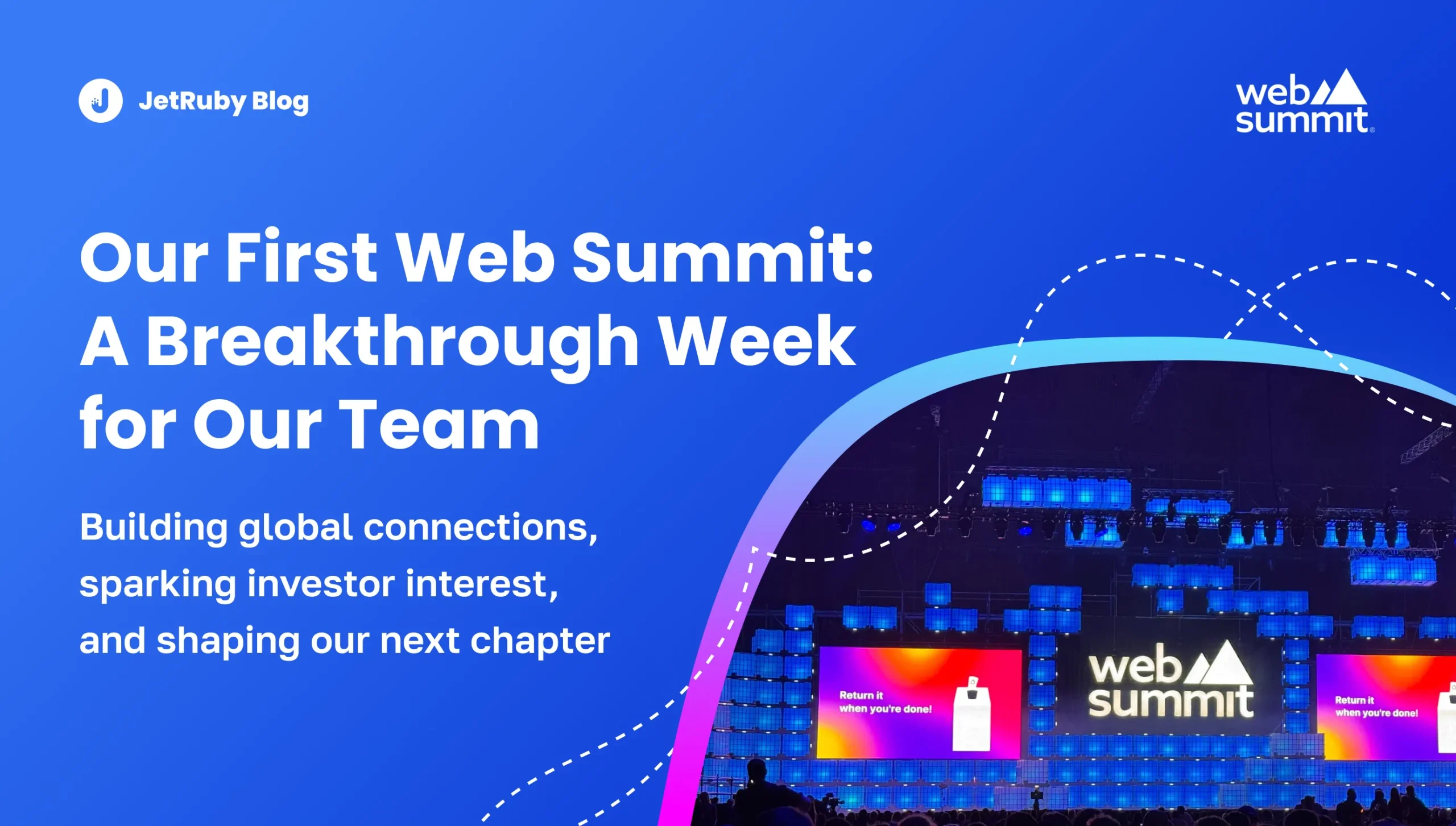Table of Contents
There’s a common joke in the developer community: People often ask developers to create a “super simple” app based on their brilliant idea that will make them a lot of money. Clients often ask, “How much does it cost to make an app?” or “What are app development costs in common?”
This is like asking, “How much does it cost to build a simple house? I just want a few rooms and maybe some running water.” or “How much does it cost to make a simple car?” Clients might think it’s easy, saying, “I just want four wheels and a steering wheel.”
These questions ignore the reality that building something functional and reliable involves many details and challenges.
You need thorough research, clear planning, and collaboration with an experienced development team to develop a successful mobile app. This partnership ensures that the app meets your business goals and user needs.
Key Takeaways
- The Mobile App Market is Growing Rapidly — In 2025, the global mobile app market is expected to surpass $613 billion, making it a crucial investment for businesses.
- App Development Costs Vary — Depending on the complexity, costs range from $10,000 to over $150,000. Simple apps start around $25,000, while enterprise-level apps can exceed $150,000.
- Key Cost Factors — The final price depends on the app’s design, features, integrations, platform choice (iOS, Android, or cross-platform), and developer location. For example, hiring developers costs between $20 and $200 per hour, depending on the region.
- Ways to Save on Development – Start with a Minimum Viable Product (MVP) to test your idea, reuse code where possible, and prioritize only essential features to avoid unnecessary costs.
- Ongoing Maintenance is Essential – Budget 15–20% of your initial development cost per year for updates, security fixes, and improvements.
Why Businesses Are Investing in Apps
The global mobile app market is thriving, with its value expected to exceed $613 billion in 2025.
Whether it’s an eCommerce platform, a healthcare app, or an entertainment service, businesses see apps as a way to stay relevant and competitive.
An app offers benefits like:
- Giving customers easier access to your services.
- Building loyalty through personalized features.
- Collecting valuable data to improve your offerings.
But with these benefits comes the need to plan carefully for app development costs.
A Ballpark Estimate On App Development Costs
According to Clutch data, the average cost to build a mobile app is between $10,000 and $49,999.
However, prices can vary depending on the project’s size and desired features. The cost also depends on the mobile app development company’s size, experience, and location.
There are a lot of factors that affect the final cost of the app, including, but not limited to:
- Design and number of screens of the app
- Development process complexity
- QA and testing phase
- Developers’ hourly rate (which basically depends on the location of the team)
- Amount of functions and features, their complexity
- Number of necessary 3rd party integrations
Another element that indirectly shapes cost is how your app manages user permissions and data access. Modern users are highly conscious of privacy, and addressing this properly often requires additional design and development effort. For a deeper look at why apps request certain permissions and how they handle data control, check out this GoodFirms guide.
Let’s dive deeper into each of them and explore the most important factors to give you a clear picture.
Overall App Complexity
Not all apps are the same. Some apps are just adapted webpage interfaces or a single-screen RSS feed, while others may include complicated computations and business logic. The overall complexity is a major-level criterion that influences the final app cost and drilling down on exact parameters further:
| Overall complexity | Ballpark description | Approx app cost |
|---|---|---|
| Simple app | basic functionality, 3–4 screens | $25,000 to $50,000 |
| Medium app | custom features, third-party integrations | $50,000 to $120,000 |
| Enterprise-level app | advanced features, high scalability | $150,000 or more |
Features and Functionality
Each additional feature adds to the cost of app development. For instance:
- Payment systems: Add convenience but require advanced security protocols, increasing costs.
- Real-time tracking: Useful for delivery apps but needs sophisticated development.
- AI-based recommendations: Popular in shopping, healthcare, and financial apps but require expertise and higher budgets.
App Category
The type of app you’re developing also affects the cost. Different categories have different requirements.
For instance, there is a big difference between travel and fintech apps. Fintech apps are usually more complex than travel apps. This is due to the many integrations needed, the cost of licenses, security requirements, and the need for scalability.
- eCommerce: Needs secure payment gateways, product listings, and inventory management.
- Social Media: Requires user profiles, messaging, and real-time updates.
- Gaming: One of the most expensive app categories that comes with complex graphics, animations, sound and music atmosphere, rich storylines, and sometimes multiplayer capabilities.
- Learning: Needs features like quizzes, progress tracking, and possibly video content.
Each category has its own set of features that can influence the overall cost.
User Interface & Visuals
How your app looks and feels is crucial for user satisfaction. The design complexity can significantly impact costs.
Basic designs cost less, while custom interfaces with animations and unique visuals require more effort and higher app design prices.
- Basic Designs: Simple layouts with standard buttons and fonts are more affordable.
- Custom Interfaces: Unique designs with animations, special graphics, and tailored user experiences require more time and creativity, thus increasing the cost.
A well-designed app attracts users and keeps them engaged, so it’s worth investing in good visuals.
Platform Choice
Your target audience determines whether you need an Android, iOS, or cross-platform app.
- Android app development price: $40,000 to $180,000 due to the diversity of devices.
- iOS app development price: $30,000 to $150,000, slightly lower since iOS devices are more standardized.
- Cross-platform apps: $50,000 to $200,000, offering a balance between cost and functionality.
Let’s do our calculations based on a simple, average app with moderate complexity.
Developing a medium-complexity app for both Android and iOS will cost about $100,000. However, making just one native app for either platform will cost around $65,000 due to the reuse of code and design.
A cross-platform app will typically cost between $80,000 and $100,000. Cross-platform development is often more complex, and you may end up paying a similar amount depending on the framework and the app’s features.
Code Reuse
Reusing existing code can save both time and money. It’s like using a tried-and-true recipe instead of inventing a new dish from scratch.
- Reusable Components: Utilizing libraries or frameworks that have pre-built functionalities can speed up development.
- Modular Architecture: Designing your app in a way that allows you to reuse code for different parts of the app or even in future projects.
Effective code reuse can lower development costs and make updates easier.
Team Location
Where your development teams work impacts the cost of app development:
- North America: $100 to $200 per hour.
- Eastern Europe: $25 to $75 per hour.
- Asia: $20 to $50 per hour.
Ongoing Maintenance
The work doesn’t stop after the app is launched. Regular updates, bug fixes, and feature additions cost around 15–20% of the initial cost of building an app each year.
Note! You may have seen online calculators that promise to estimate your app development costs. However, these tools are often unreliable.
Why?
First, they can’t consider all the factors that affect the cost, like the number and complexity of features, design details, backend infrastructure, and post-launch support.
Second, as a future app creator, you might not have all the information necessary to use these calculators accurately. Because of this, consulting an expert is usually necessary to better understand development costs and the app-building process.
So, how much does it cost to make an app then?
Let’s look at examples of how much it costs to build some well-known apps:
- Tinder: The initial app cost was around $70,000.
- Uber: The cost to develop an app like Uber ranges from $50,000 to $150,000 for one platform.
- Airbnb: The initial cost to build an app like Airbnb was approximately $150,000.
These numbers give a sense of what to expect for apps with similar functionality.
Looking for an experienced tech partner?
Plan for Success Visualize your product, define architecture, avoid early mistakes, and ensure clear requirements while getting accurate budget and timeline estimates for better resource planning
How to Save Money When Developing an App
Many people mistakenly believe that mobile app development is very expensive, complicated, or won’t provide a good return on investment.
But don’t worry — we can explore some smart and practical ways to keep costs down without sacrificing quality.
Here’s how you can save money while building your app:
1. Research the Target Market
Before you start building anything, take some time to understand who will use your app. Ask yourself:
- Who are my potential users? Think about their age, interests, and what they need.
- What do they already use? Look at similar apps to see what works and what doesn’t.
- What problems can my app solve? Make sure your app addresses a real need.
Doing this research helps you focus on what matters, so you don’t waste time and money on features that nobody wants.
2. Prioritize Features Early On
You might have a long list of cool ideas for your app, but it’s best to start with the most important ones. One feature that covers the key pain point of your target audience. Ask yourself:
- What are the must-haves? These are the features that make your app useful.
- What can wait? Save the nice-to-have features for later updates.
By focusing on the essentials first, you can reduce costs and ensure that your app does its job well.
3. Conduct a Startup Pivot if Your Idea Doesn’t Work
Sometimes, your initial idea might not hit the mark despite your best efforts. Don’t worry — it happens! Here’s how to handle it:
- Listen to feedback: Pay attention to what users are saying and where they’re struggling.
- Be flexible. Based on your learning, you should be ready to change your app’s features or its main purpose.
- Reallocate resources: Focus your time and money on parts of the app that have the most potential.
Pivoting can help you steer your app toward what users really want, preventing you from wasting resources on a failing idea. If you don’t know where to start, check out our text about pivoting your startup.
4. Hire an App Development Company
Instead of trying to build everything yourself or putting together an in-house team, hiring a professional app development company can be a smart move. Here’s why:
- Expertise: They have experience and know the best practices.
- Flexibility: You can scale the team up or down based on your needs without long-term commitments.
- Efficiency: Professional companies often have streamlined processes that get things done faster and cheaper.
Just make sure to choose a company that has good reviews and understands your vision.
5. Choose the Right Platform
Decide whether you want your app to be on iPhone, Android, or both. Here’s how to choose:
- Where are your users? If most of your audience uses iPhones, start there.
- Budget considerations: Building for one platform first can save money compared to developing for both at the same time.
- Future plans: Think about where you might want to expand later.
Starting with one platform can help you manage costs and make a strong launch before expanding.
6. Create an MVP (Minimum Viable Product)
An MVP is like a basic version of your app that includes only the core features. Think of it as a simple prototype that you can launch quickly. Here’s why it’s a smart move:
- Cheaper to build: You’re only creating what’s necessary.
- Get feedback early: Users can tell you what they like and what needs improvement.
- Grow wisely: Use the feedback to add new features that people actually want.
For example, if you’re developing a fitness app, you might start by tracking workouts. Later, you can add more features like meal plans or advanced analytics based on user requests.
7. Test Your App
Don’t wait until the end to test your app. Start testing early and often. Here’s why it’s important:
- Find bugs early: Fixing problems while you’re still building is cheaper than after launch.
- Improve quality: Regular testing ensures your app works smoothly and keeps users happy.
- Save time: Efficient testing can speed up the overall development process.
Test on different devices and get feedback from real users to catch as many issues as possible.
8. Submit the App to Stores
When your app is ready, you need to get it into the app stores like Apple’s App Store or Google Play. Here’s how to do it smoothly:
- Follow guidelines: Each store has rules you need to follow to get approved.
- Do a final check: Make sure everything works perfectly to avoid being sent back for changes.
- Plan your launch: Coordinate your submission with your marketing efforts to make a big splash without extra costs.
Getting your app approved the first time helps you save time and avoid frustration.
9. Launch and Track Performance
Once your app is live, keep an eye on how it’s doing. Here’s why tracking is crucial:
- Understand users: See which features are popular and which aren’t being used.
- Fix issues quickly: Spot any problems early and address them before they become big headaches.
- Measure success: Know if your app is meeting your goals and making a good return on investment.
Use tools like Google Analytics or in-app tracking to gather this information and make informed decisions for future updates.
10. Plan for Maintenance
Building your app is just the beginning. You need to keep it running smoothly over time. Here’s what to keep in mind:
- Regular updates: Add new features and improvements based on user feedback and tech advancements.
- Fix bugs: Continuously address any issues that arise to keep users happy.
- Stay secure: Protect your app from security threats and keep up with data protection laws.
Setting aside a budget for maintenance helps ensure your app stays relevant and reliable, which keeps users coming back.
Get help with your simple, medium-complexity, or even complex app from JetRuby’s expert engineers!
Why JetRuby is a Great Partner for App Development
As previously mentioned, building an MVP is a practical way to reduce costs without sacrificing quality.
True story.
A strong MVP makes operations smoother, adjusts to market changes, and provides value to customers without the risks of developing a full product.
So, how exactly does it work?
Let us show you an example based on one of many JetRuby cases.
A client company that has 16 storage facilities in the U.S. worked with third-party online platforms to rent its units. Although these platforms handled customer service, they took a large share of the profits and limited the company’s access to data.
When our client decided to manage rentals independently, they built a custom website because they had tight deadlines for ending contracts with these platforms.
Speed and accuracy were very important in this situation, as delays could have caused them to lose customers and income.
The JetRuby team quickly built a minimum viable product (MVP) that focused on the key functions needed to manage rentals in-house. This MVP gave the company the necessary tools to operate independently and manage customer relationships.
Our approach involves:
Fast Solutions for Quick Results
Many businesses need quick help. We usually take 3-4 months to give our clients useful results. We focus on speed and quality.
Focusing on Important Needs
The first version of a product (MVP) includes useful features. These can help with sales, payments, or customer service. The MVP should solve important problems immediately.
Planning for Future Growth
While the MVP provides essential features, we allow it to grow later. This means it can be improved with more features over time.
Working with the Client’s Team
We work closely with the client’s team to ensure the MVP fits their goals and current systems. This helps us make everything work better together.
Summing it up, when you understand app development costs, you plan better and avoid surprises.
Whether you wonder, “How much does it cost to develop an app for Android or iOS?” or you’re exploring cross-platform development options, being informed will help you make the right decisions.
Creating a mobile app has significant benefits. It can improve customer engagement, increase sales, and make business processes more efficient. Therefore, investing in a mobile app is a smart decision that can help your business grow and operate more efficiently.
If you’re thinking about creating an app, work with professionals like JetRuby. Our expertise ensures you get a cost-efficient solution that meets your needs without compromising on quality.
Please contact us if you have any questions left or if you need a piece of professional advice.
